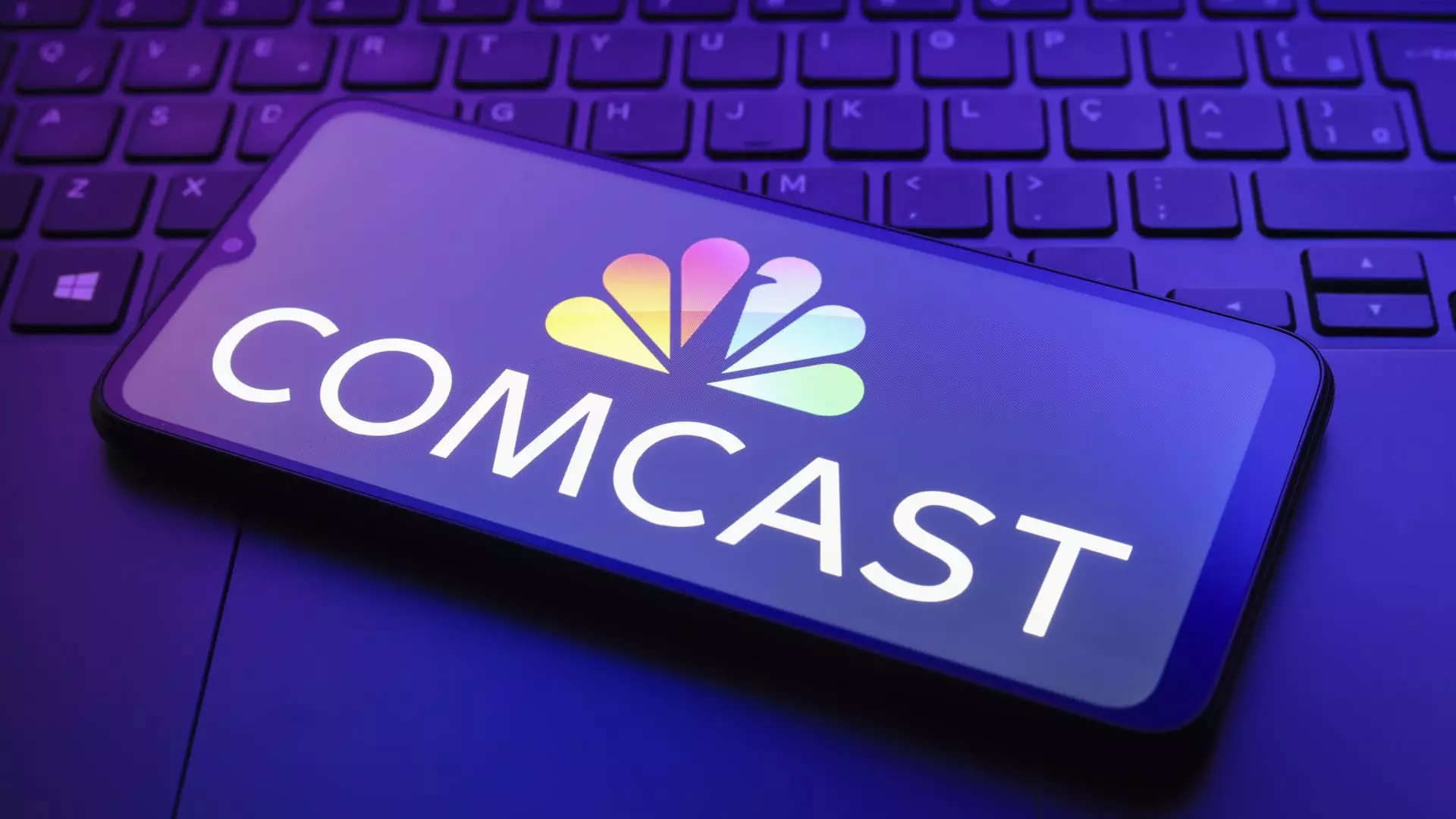Comcast’s recent announcement regarding the launch of Universal Ads marks a pivotal moment in the advertising landscape. The initiative aims to streamline the process through which smaller businesses can purchase advertising space, with the hope of reeling advertisers away from the dominance of social media platforms. Scheduled to unfold in the first quarter of the upcoming year, this platform is not merely a tactical maneuver; it represents a strategic vision to invigorate traditional media’s relevancy in an increasingly digital world.
Purchasing advertising spots in traditional media has historically been a convoluted process, especially when compared to buying ad time online through familiar giants like Meta and YouTube. Mark Marshall, Chairman of Global Advertising and Partnerships for NBCUniversal, articulates this problem by noting that an increasing number of advertisers are dissatisfied with their digital-centric strategies and are yearning for diversification. Their desire stems from the challenges posed by the overwhelming dominance of a few technology firms that have simplified transactions for advertisers, leaving traditional media in the dust.
James Rooke, President of Comcast Advertising, underscores the core objective of Universal Ads: to ease the purchasing experience. The platform is designed to mimic the user-friendly interfaces of social platforms, allowing an array of advertisers—especially those from small and medium-sized businesses (SMBs)—to seamlessly engage with premium video content across various channels. This transference of the advertising process to a self-service platform embodies a significant transformation in how traditional media is marketed.
A crucial aspect of the Universal Ads initiative is its collaborative nature. By forming partnerships with a variety of established media companies—such as NBCUniversal, A+E, and Paramount—Comcast is presenting a united front against the dominance of digital platforms. These partnerships serve to provide advertisers with numerous avenues for ad placements, enhancing their overall reach and access to diverse content. As the initiative unfolds, additional players are anticipated to join, further solidifying its market presence.
Rooke’s insight into the expanding horizons presents a stirring vision: the potential for Universal Ads to tap into a growing pool of advertisers previously excluded from traditional media avenues. By offering automated artificial intelligence tools to craft ads efficiently, Comcast is addressing the root barriers some small businesses face when engaging in advertising. This move not only underscores the importance of technology in marketing but also highlights a commitment to leveling the playing field for all advertisers, regardless of their size.
The landscape of advertising has been shifting rapidly as consumers increasingly gravitate towards streaming services and away from conventional television. The longstanding prominence of platforms like YouTube and emerging contenders such as TikTok indicate a clear transition toward digital media consumption. As younger generations embrace these platforms, traditional broadcasters face the challenge of reclaiming ground lost to these digital behemoths.
Comcast’s Universal Ads aims to address this challenge head-on. By positioning itself strategically at the intersection of traditional and digital advertisement spaces, Comcast endeavors to capture the attention of advertisers who may feel jaded by the returns on their digital investments. As Marshall eloquently puts it, Comcast seeks to uncover “new demand opportunities” for nontraditional advertisers by providing them with a streamlined route to premium content access.
While the ad market promises growth in the coming years, traditional media is witnessing a different trajectory. A report from GroupM forecasts only modest growth for TV advertising revenues while predicting a robust rise for pure digital platforms. This stark contrast necessitates a reevaluation of strategies by traditional media outlets. Rooke’s assertion—that companies could either “compete in a diminishing market” or pivot towards “where the growth is”—reiterates the urgency of Comcast’s initiative.
Further complicating this narrative is the reality that large-scale advertisers still allocate substantial budgets to traditional media, particularly for live events and sports, which continue to draw significant viewership. The Super Bowl, for instance, has consistently been a prime target for advertisers willing to pay millions for one spot. Hence, the challenge lies in finding equilibrium between embracing modernity and leveraging traditional strengths, ensuring that Comcast’s Universal Ads can create synergy in ad spending across platforms.
Universal Ads represents a methodical approach to bridging the gap between traditional advertising and the burgeoning digital realm. By simplifying the ad purchasing process, fostering collaboration with other media entities, and prioritizing the needs of smaller businesses, Comcast aims to redefine the interplay between these two industry segments. The initiative stands as both a response to current market dynamics and a proactive endeavor to reclaim advertising space from the clutches of social media monoliths. As Universal Ads takes shape, it remains to be seen if it might indeed herald a new era for advertising, successfully merging the best of both worlds.

